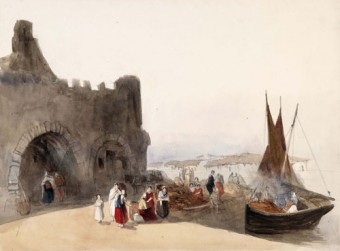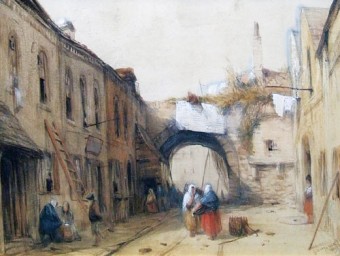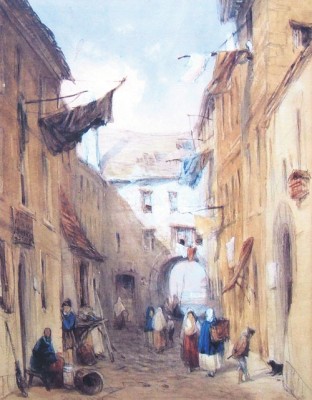Search Results for 'Eton College'
5 results found.
William Evans of Eton and his old Galway watercolours

William Evans of Eton (1798-1877) was the drawing master of Eton College in England and was an accomplished artist who exhibited widely in London, Dublin, and Paris. He made a number of visits to the west of Ireland in 1835 and 1838 where he produced many studies and finished watercolours, mostly of Counties Galway and Mayo, a mixture of picturesque landscapes, market and street scenes, and what might be called peasant structures and peasant portraits.
Successful Bish rowers feature in Galway Regatta
The annual Galway Regatta, which holds a special place in the annals of Galway history and an important fixture in the Irish Rowing calendar, takes place on Sunday (June 19).
The Spanish Arch, one hundred and seventy years ago

Antique paintings can be very important documents of social history, giving us an insight into what life must have been like when the picture was painted. They can recreate for us the streets and scenes and buildings where our ancestors may have lived or worked, show us how they dressed, the games they played, etc, before the Famine or before photography was invented. Such images of Galway are rare, so it is a pleasure to come across this descriptive watercolour of the back of the Spanish Arch, which is in a private collection.
A street scene in Galway, 1835

Some weeks ago we reproduced a painting by William Evans of Eton College in this column. It was a colourful scene painted at the back of the Spanish Arch in 1835. Today’s image was painted in watercolour over pencil and heightened with body colour in that same year and was entitled “A Street Scene in Galway”.
Buttermilk Lane, 1838

William Evans (1798 – 1877) was an accomplished English painter who was the drawing master at Eton College. He exhibited widely including with the RHA and in Paris and, judging by the prices on his work, was held in high esteem. A number of his paintings were used as illustrations in books. During 1836 and 1837 he showed 14 Irish subjects at the Old Watercolour Society, all of counties Galway and Mayo. These consisted of a mixture of landscapes, street and quayside scenes, indigenous peasant structures, and peasant portraits. For an English artist, his choice of terrain was highly adventurous, and it could be said that his paintings brought a new area of inspiration to the attention of artists in the UK.

